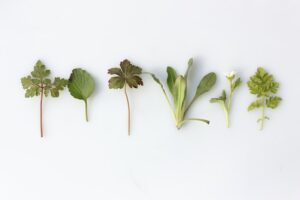Growing peppers at home is a fun and easy way to enjoy fresh, flavorful vegetables right from your own garden. Peppers are a versatile crop that can be grown in a variety of climates and conditions, making them a great choice for home gardeners of all skill levels. In this article, we will explore the benefits of growing peppers at home and some tips for a successful harvest.

The first step to growing peppers at home is to choose the right variety for your climate and taste preferences. There are many different types of peppers available, ranging from sweet and mild to spicy and hot. Some popular varieties include bell peppers, jalapenos, habaneros, and cayenne peppers. Consider the amount of heat you can tolerate and the amount of sunlight your garden receives before selecting your pepper plants.
Soil Preparation
Peppers thrive in well-draining, nutrient-rich soil. To prepare your garden bed, amend your soil with compost or other organic matter to improve its fertility and drainage. You can also add a slow-release fertilizer to give your pepper plants a boost. Peppers prefer a soil pH between 6.0 and 6.8, so consider testing your soil and adjusting as necessary.
Planting
Peppers should be planted in a sunny, warm spot in your garden after all danger of frost has passed. Space your pepper plants 18-24 inches apart and plant them at the same depth as their seedlings or nursery pots. Mulch around your pepper plants to help retain moisture and suppress weeds.
Watering and Feeding
Peppers require consistent moisture to grow and produce fruit. Water your plants deeply once or twice a week, depending on weather conditions. Be careful not to overwater, as this can lead to root rot and other issues. Peppers benefit from regular feedings of organic fertilizer or compost tea, especially during the flowering and fruiting stages.
Pest and Disease Control
Peppers are susceptible to a variety of pests and diseases, including aphids, spider mites, and fungal infections. To prevent these issues, keep your garden clean and tidy, remove any diseased or damaged leaves, and use organic pest control methods, such as neem oil or insecticidal soap. Consider companion planting with herbs like basil and oregano to deter pests.

Harvesting
Peppers are ready to harvest when they reach their full size and color. Sweet peppers are typically harvested when they are fully ripe and have turned their final color, while hot peppers can be harvested when they are still green or partially ripe. Use a pair of sharp scissors or pruning shears to cut the peppers off the plant, being careful not to damage the stem or other peppers. Wear gloves when harvesting hot peppers to protect your skin from the heat.
Growing peppers at home is a fun and easy way to enjoy fresh, flavorful vegetables all season long. By selecting the right variety, preparing your soil, planting, watering and feeding, controlling pests and diseases, and harvesting at the right time, you can grow a bountiful harvest of peppers in your own backyard. So why not give it a try and spice up your garden and your meals?






